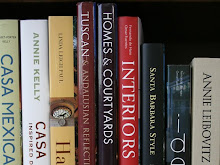To begin, I looked to the Yucatan Peninsula and a recent visit to pre-Columbian ruins at Tulum. This Mayan city is situated along a cliff overlooking the Caribbean Sea. And though it may have been built as early as 300 BC, the majority of its buildings date between 1200 to 1500 AD. As a result of the Spanish Conquest, the Maya abandoned the site late in the 16th century.
One enters the city through a low, narrow tunnel carved into the massive stone wall.
 On the other side, I was first struck by the vastness of the fortress and the beauty of its locale.
On the other side, I was first struck by the vastness of the fortress and the beauty of its locale.  Surrounded by walls on three sides, the fourth was protected by the sea. Templo del Dios del Viento (Temple of the Wind God) was built on a natural rise...
Surrounded by walls on three sides, the fourth was protected by the sea. Templo del Dios del Viento (Temple of the Wind God) was built on a natural rise...
next to this cove:

The rubble remains of the city walls and buildings exhibit its stone construction.

The architecture is similar to that found at Chichen Itza, but on a much smaller scale. A stepped base, serving as the temple's foundation, leads to El Castillo (The Castle), the site's most imposing building.  The steps leading to Templo del Dios Descendente (Temple of the Descending God) has a similar temple substructure.
The steps leading to Templo del Dios Descendente (Temple of the Descending God) has a similar temple substructure.
 The well-preserved Templo de las Pinturas (Temple of the Frescos) is comprised of two levels and contains colored murals on its inner walls. The lower level displays a colonnade leading to an inner temple room. And, the outer temple is decorated with a series of stucco figures in bas-relief and carved masks.
The well-preserved Templo de las Pinturas (Temple of the Frescos) is comprised of two levels and contains colored murals on its inner walls. The lower level displays a colonnade leading to an inner temple room. And, the outer temple is decorated with a series of stucco figures in bas-relief and carved masks.
Here is the detail of one corner figure: The steps leading to Templo del Dios Descendente (Temple of the Descending God) has a similar temple substructure.
The steps leading to Templo del Dios Descendente (Temple of the Descending God) has a similar temple substructure. The well-preserved Templo de las Pinturas (Temple of the Frescos) is comprised of two levels and contains colored murals on its inner walls. The lower level displays a colonnade leading to an inner temple room. And, the outer temple is decorated with a series of stucco figures in bas-relief and carved masks.
The well-preserved Templo de las Pinturas (Temple of the Frescos) is comprised of two levels and contains colored murals on its inner walls. The lower level displays a colonnade leading to an inner temple room. And, the outer temple is decorated with a series of stucco figures in bas-relief and carved masks.
 Finally, La Casa de las Columnas (The House of the Columns) has preserved its series of stacked stone columns and the remains of a thatched roof.
Finally, La Casa de las Columnas (The House of the Columns) has preserved its series of stacked stone columns and the remains of a thatched roof. This detail show the stone and beam construction of the door with its bas-relief figure above:
This detail show the stone and beam construction of the door with its bas-relief figure above:




No comments:
Post a Comment